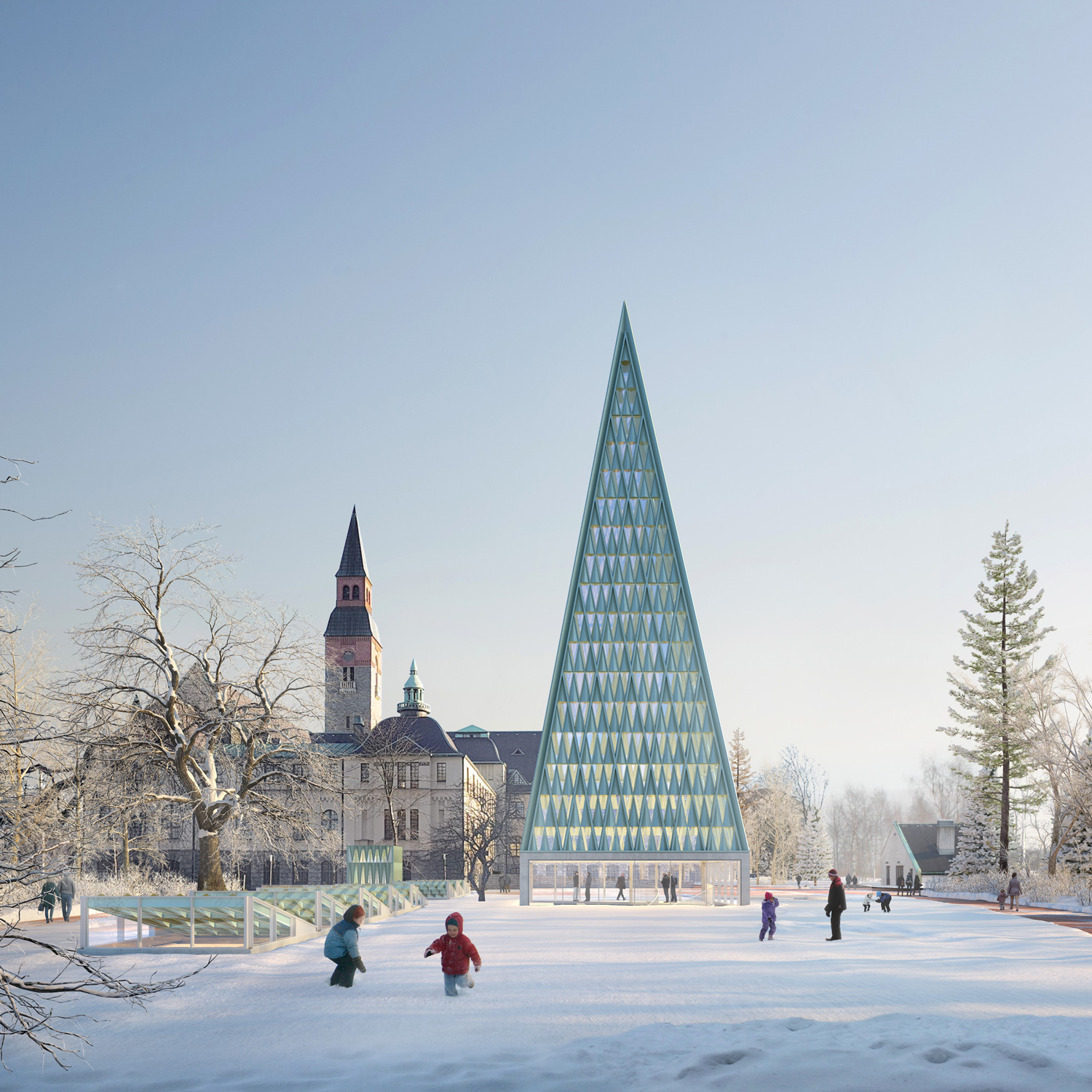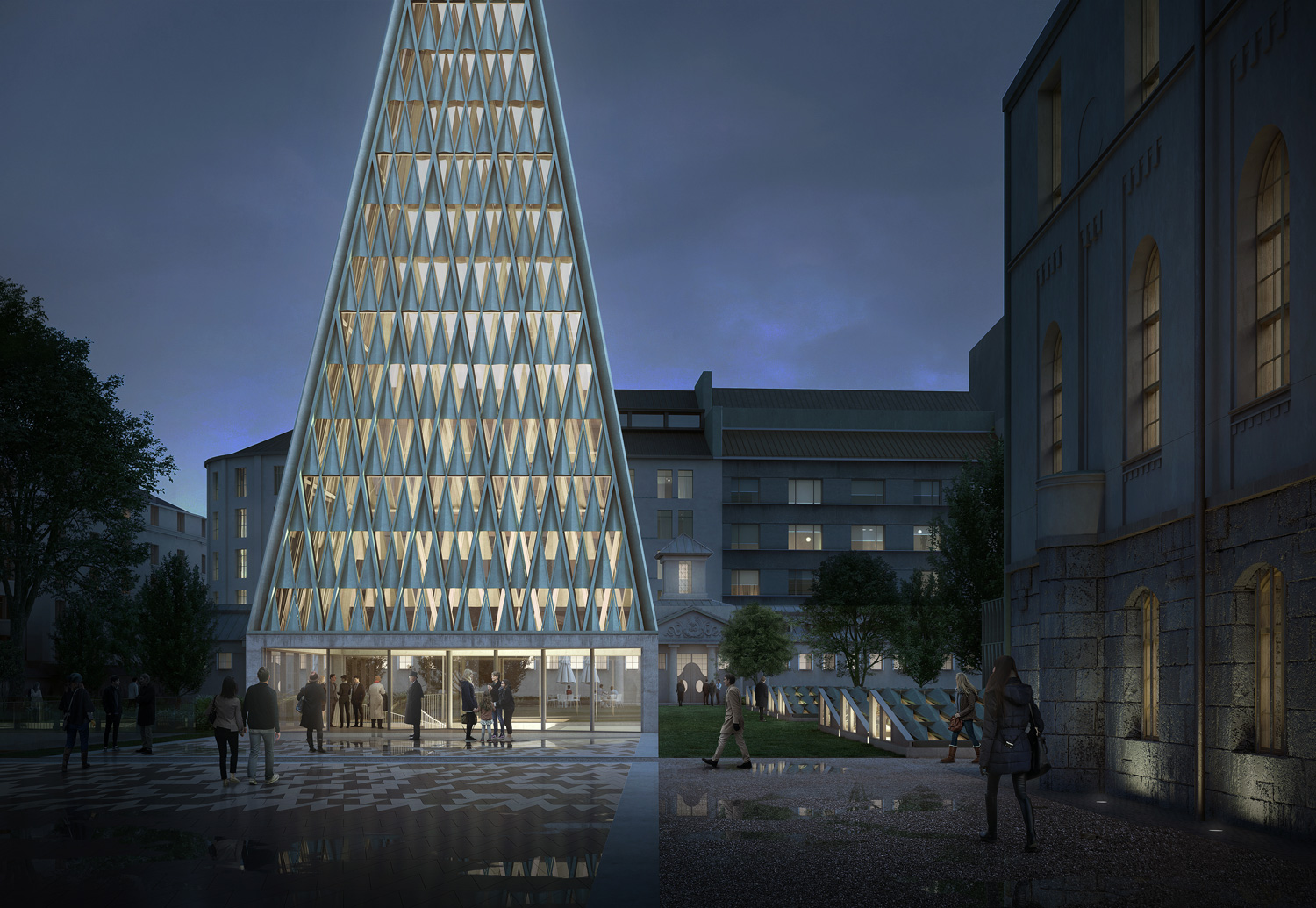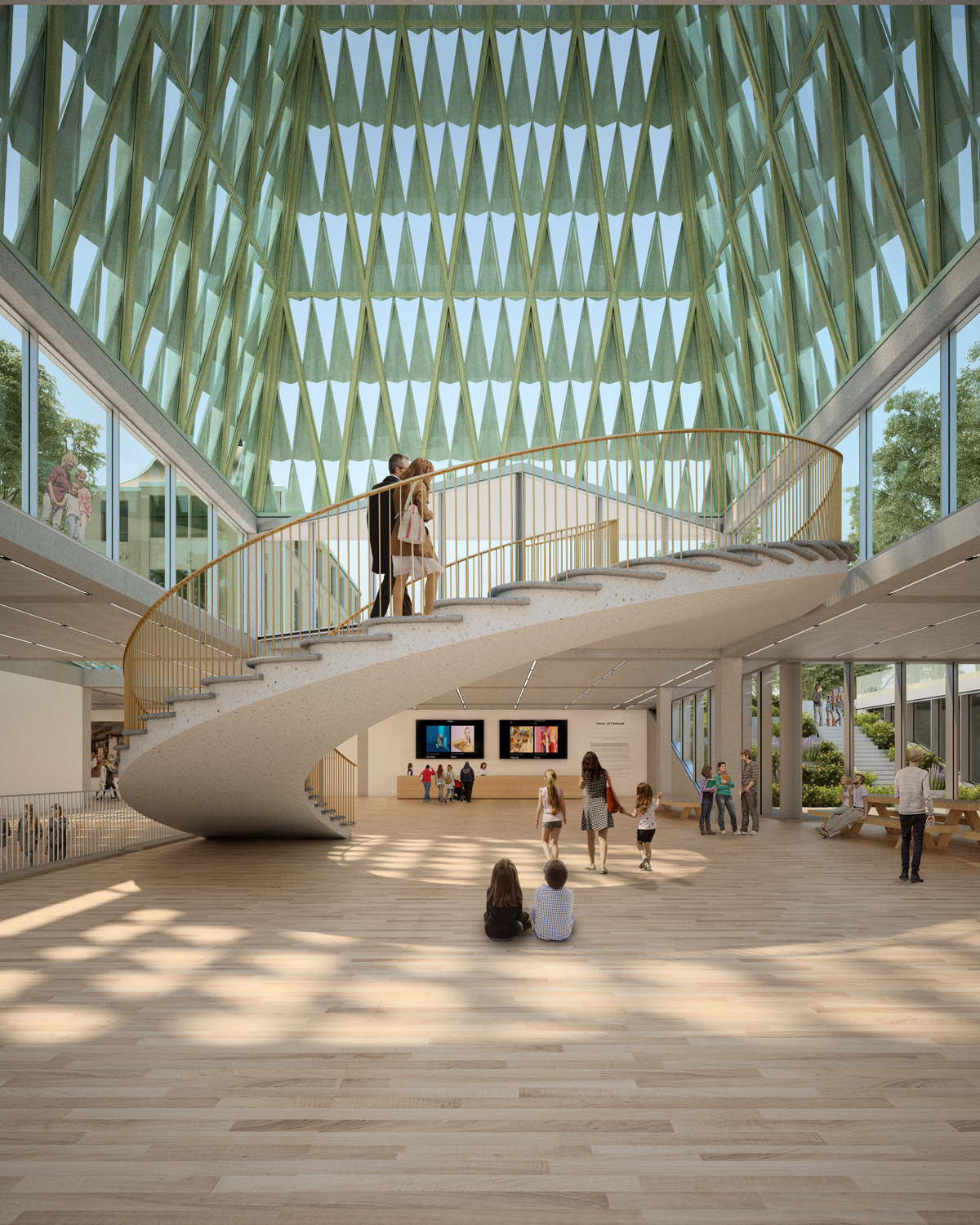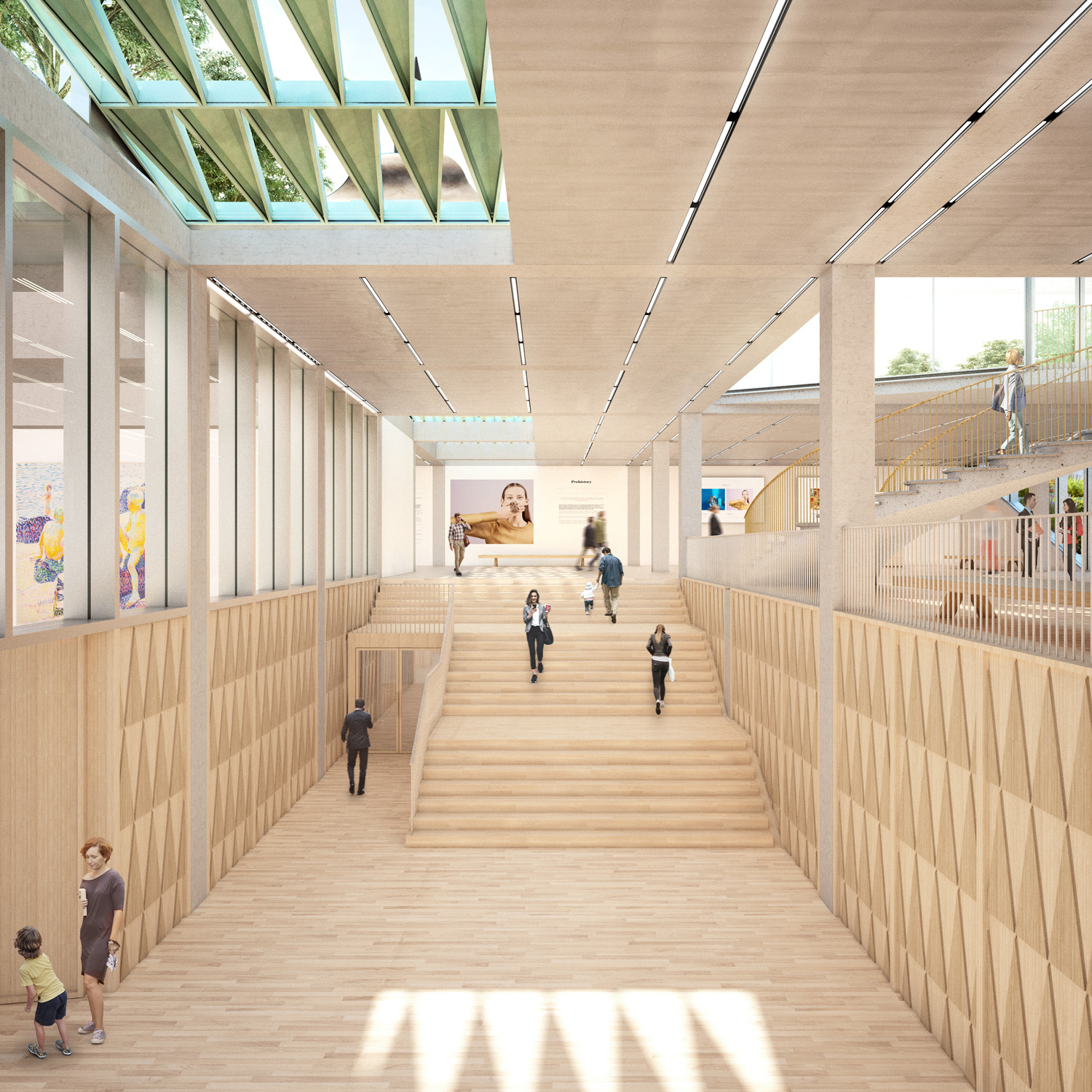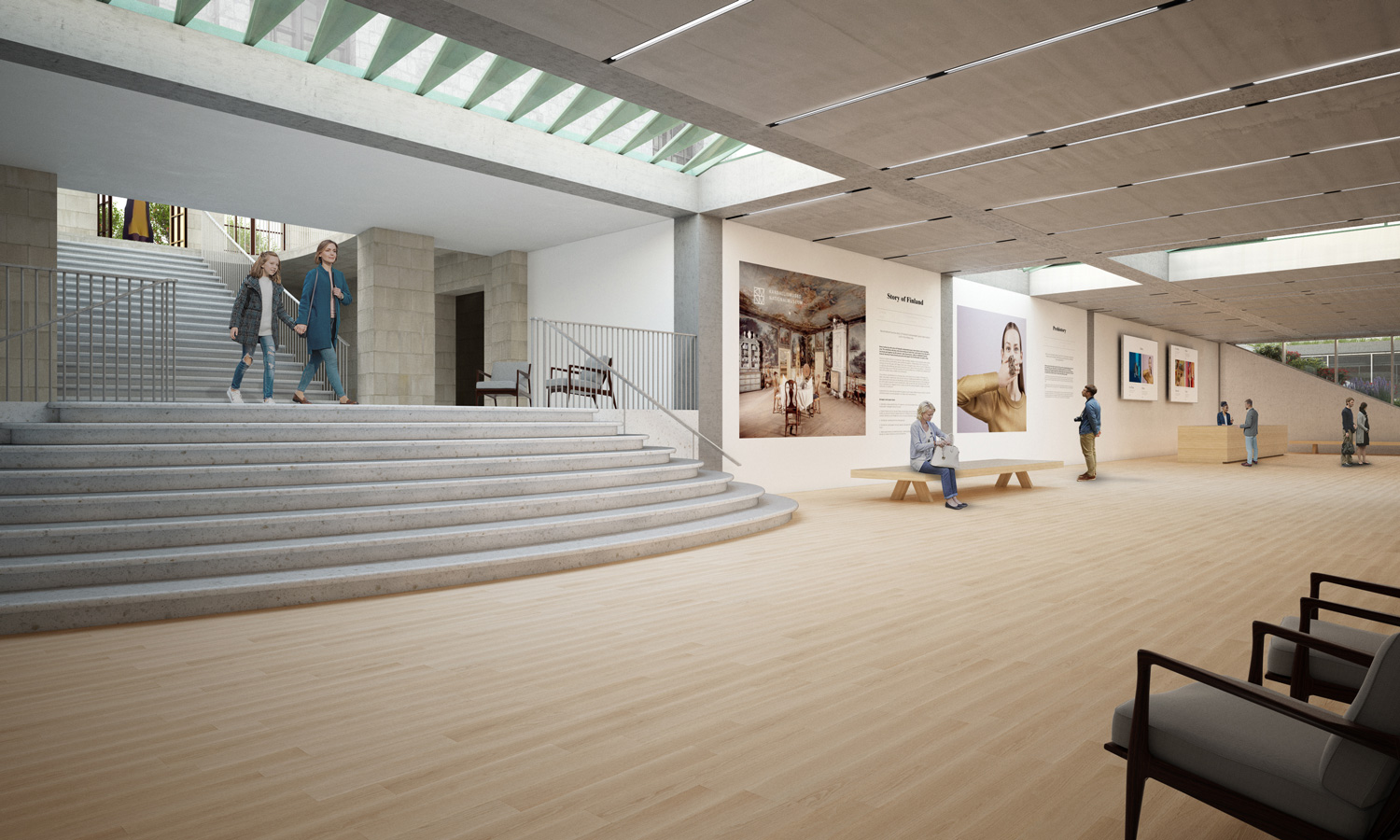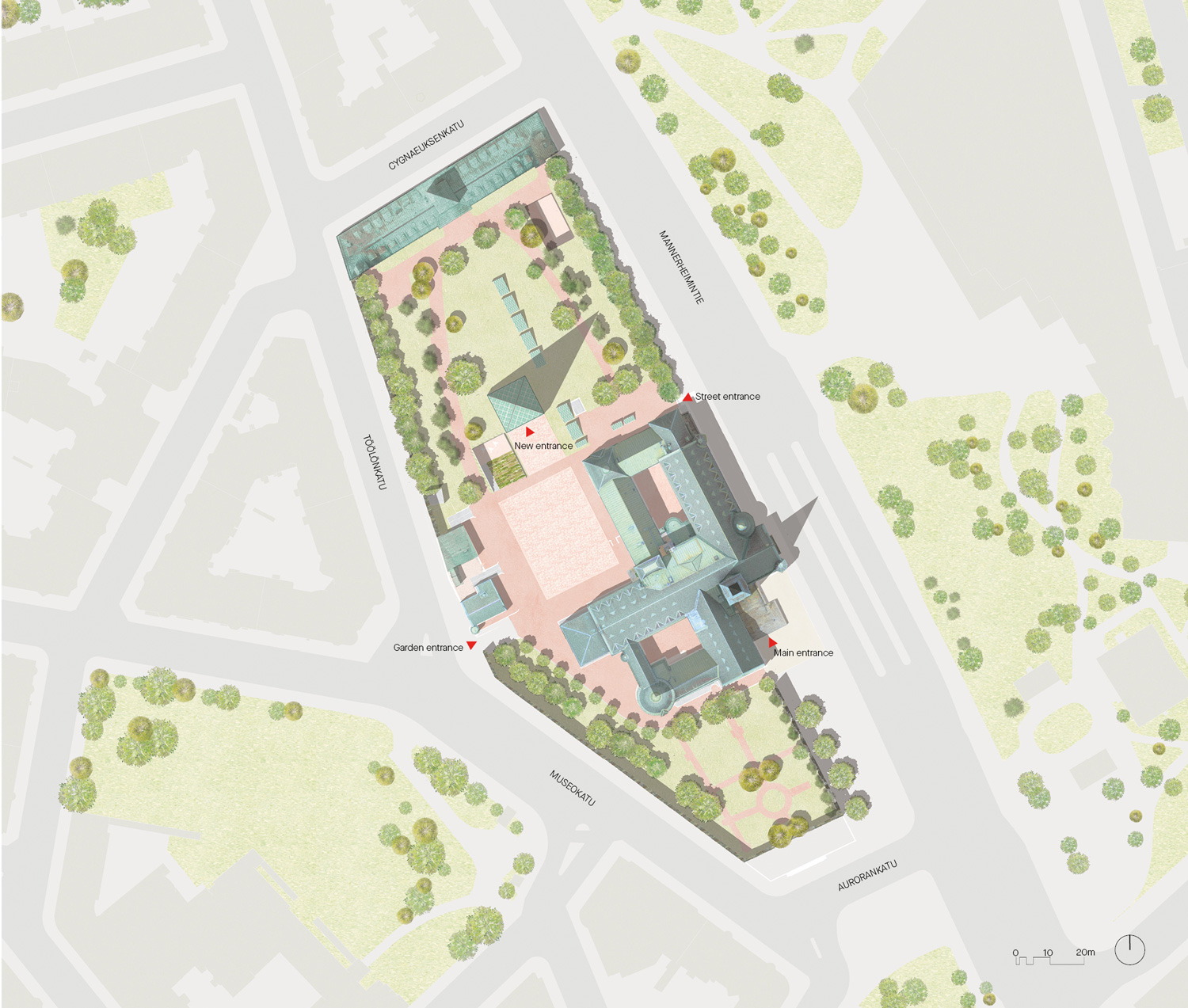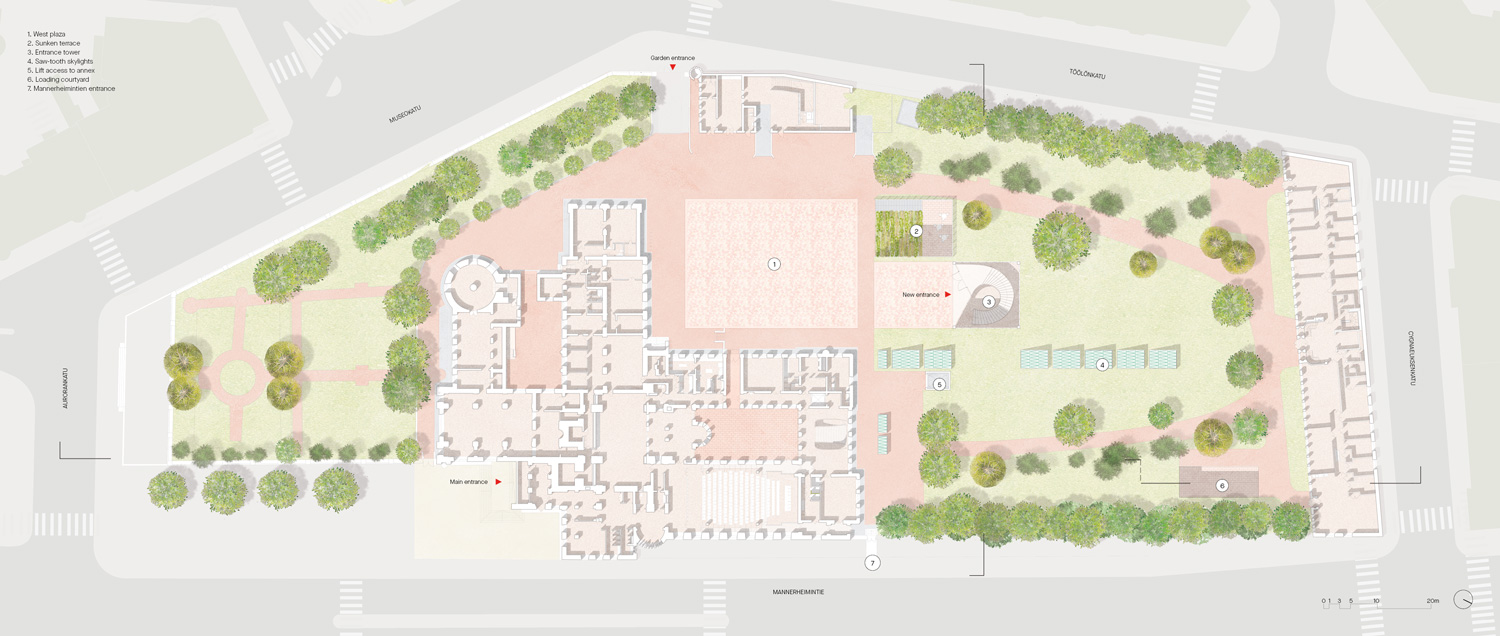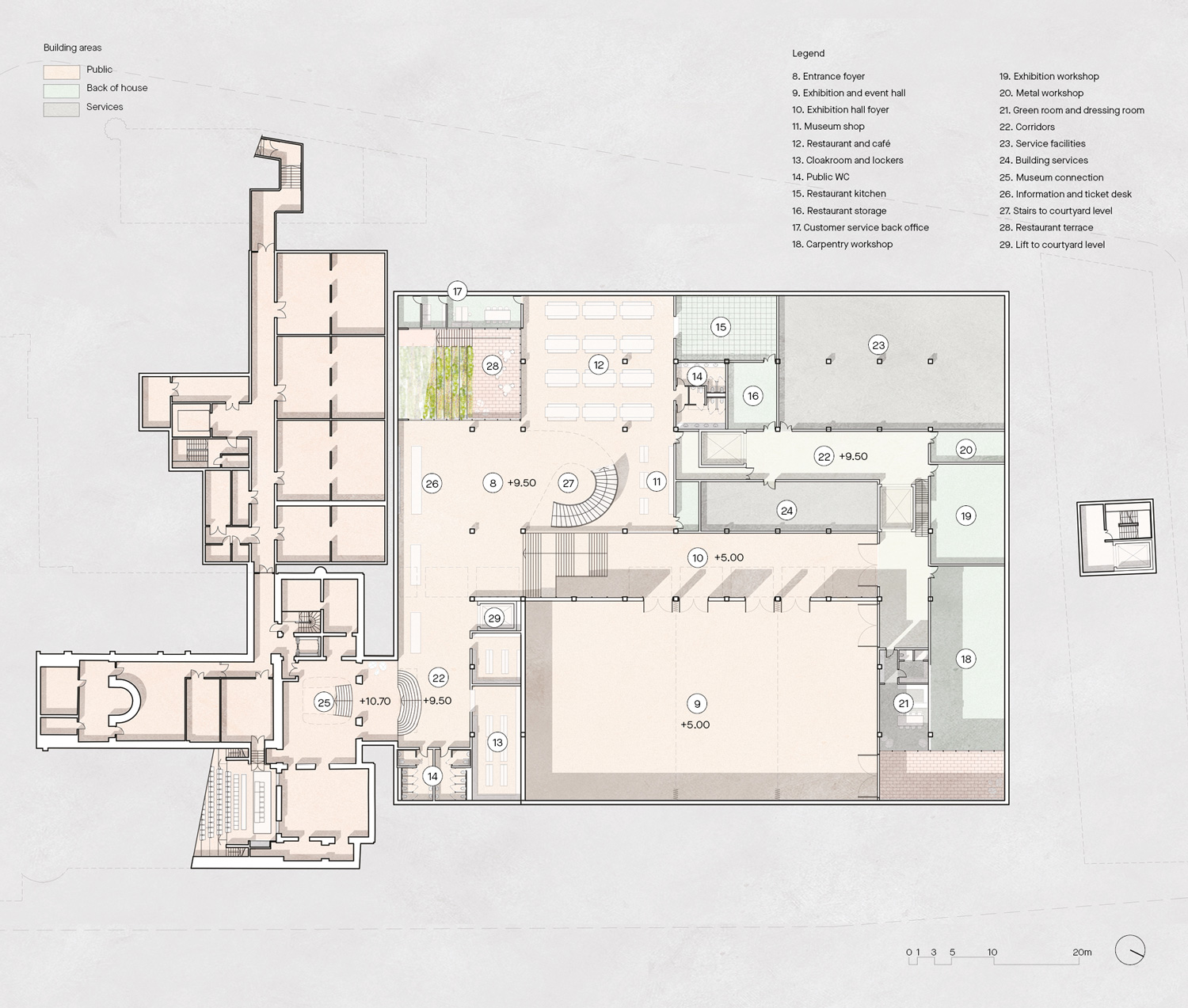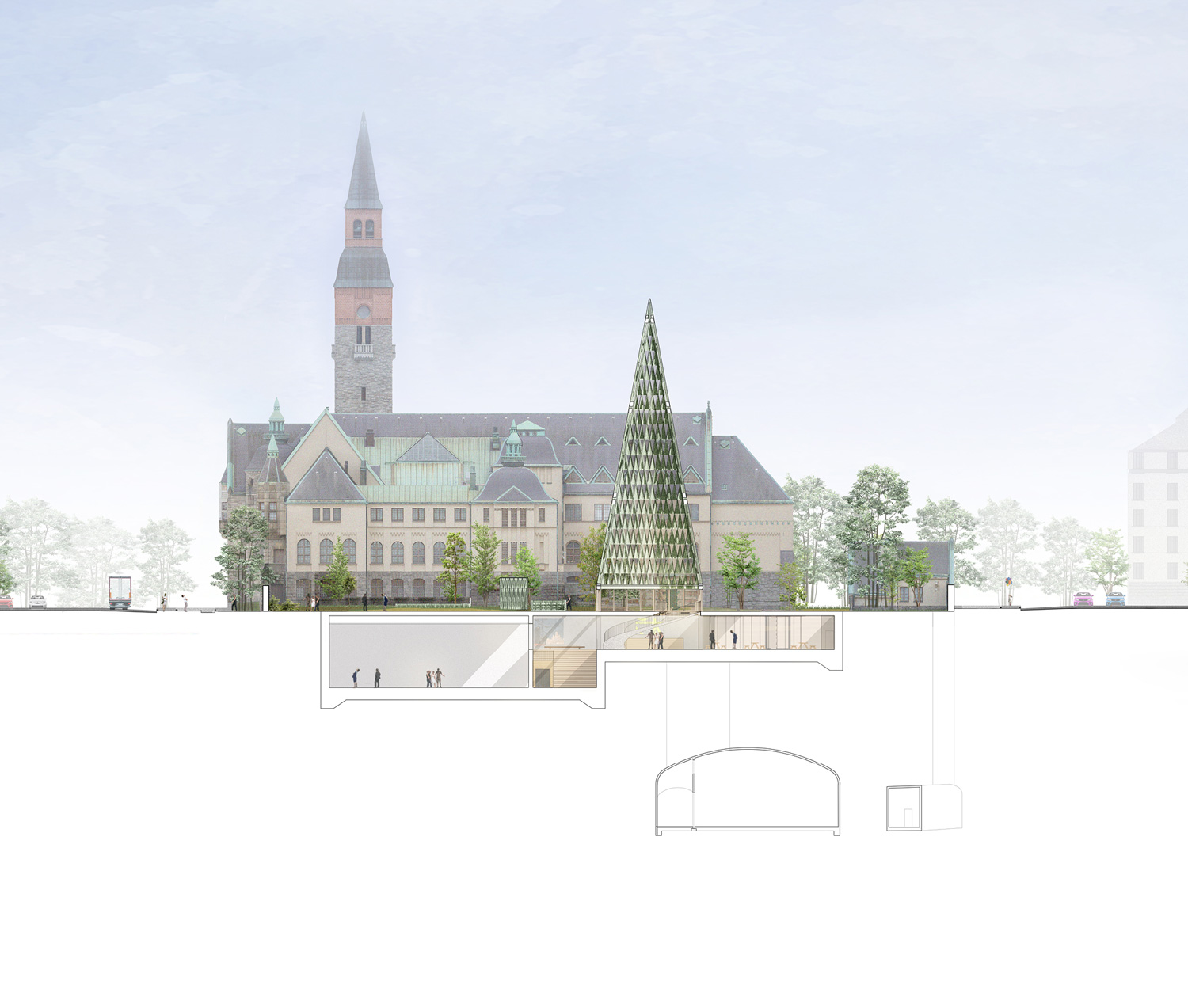☉ National Museum of Finland is a proposal by Serie Architects for National Museum of Finland in 2019. It is located in Helsinki Finland in an urban and park setting. Its scale is medium with a surface of 3.850 sqm a budget of 50.000.000 € and a ratio of 12.987 €/sqm. Key materials are concrete, metal and glass. Onirism and Francesco Bonanomi collaborated as visualizers. Review the 4 proposals for the same competition.
The evolution of the National Museum of Finland coincides with the continuity of Finnish culture and therefore owes as much to its origins as it does to its future. As such the proposal aims for maximum future potential through minimal intervention. The existing museum buildings and landscape are largely preserved with additional built areas placed underground. When above ground, the intervention is centralized near the existing museum building and courtyards to establish a coherent ensemble of old and new.
By privileging the existing character of the museum and preserving the generous open space of the courtyard park, the new annex is an exercise in selective minimalism. New elements are meant to complement the site’s existing architecture: a sunken restaurant terrace with stepping vegetation; a series of saw-tooth skylights; a large plaza to replace the west yard car-park; and a distinct annex entrance in the form of an elongated pyramidal structure.
A new spire in dialogue
Located above the primary annex entrance the new tower is an abstracted version of the original. Its fine latticework of pre-weathered copper—a highly durable and recyclable material—allows daylight to penetrate the foyer below while at night giving the effect of a glowing lantern. Visible from street level, the new tower is designed to be a distinct and memorable addition to the façade of the Etu-Töölö district.
The copper design—based on the triangular motif that reoccurs throughout the original building’s fenestration and roof lines—is echoed in the screening of a series of strategically placed saw-tooth roofs that provide daylight as well as in the cladding of a new public lift that gives access to the annex from the courtyard level and from the existing underground car-park.
A flexible and clearly organized annex level
The primary connection from the existing museum is from a staircase adjacent to the ‘Halkopiha’ courtyard that travels underneath the existing building’s stone structure. A dedicated entrance from the courtyard level is also provided. Visitors enter the new tower from a generous forecourt then descend a grand spiraling staircase, all the while underneath a dramatic copper-detailed roof.
The main exhibition hall, 1000 square meters of flexible space, is accessed from a gallery finely detailed in timber. A double-height courtyard for loading is provided at the northeast corner of the site with sufficient space to allow truck and crane access.
A new restaurant with expansive glazing shares views of a sunken outdoor terrace. Facing the restaurant a stepped garden brings greenery to the terrace while providing stair access to the ground level, allowing the restaurant to be accessed directly from the main courtyard park.
A grand plaza to complement the existing landscape
Existing at-grade parking near the Häkälä is removed to provide a generous open plaza for temporary outdoor events. Comparatively sized to the main annex exhibition hall the plaza acts as a carpet, anticipating diverse programming including outdoor exhibitions and performances. The plaza is accessible from the new annex entrance and from existing passageways that link the Halkopiha and Linnanpiha courtyards, allowing for a parallel visitor experience based on a series of outdoor spaces rather than exhibition halls.
Expansion without sacrifice
Centralizing access and activity near the main museum building allows the existing landscape to be largely preserved. Remaining are the curving pathways of the north yard as drawn by Lindgren as well as the perimeter trees along Mannerheimintie and Töölönkatu and a view corridor of the Vaunuvaja’s portico from the main museum building. In this way the scheme rejects the premise that an expansion to the museum comes at the cost of open green space.
By focusing on strategic, distinct elements the proposal aims to preserve existing architectural value while entering in direct dialogue with it. The identifiable language of the intervention attempts to demonstrate that the new museum annex can be impactful while at the same time leaving unchanged the relationship between museum and park that has come to define the site’s spatial identity.
